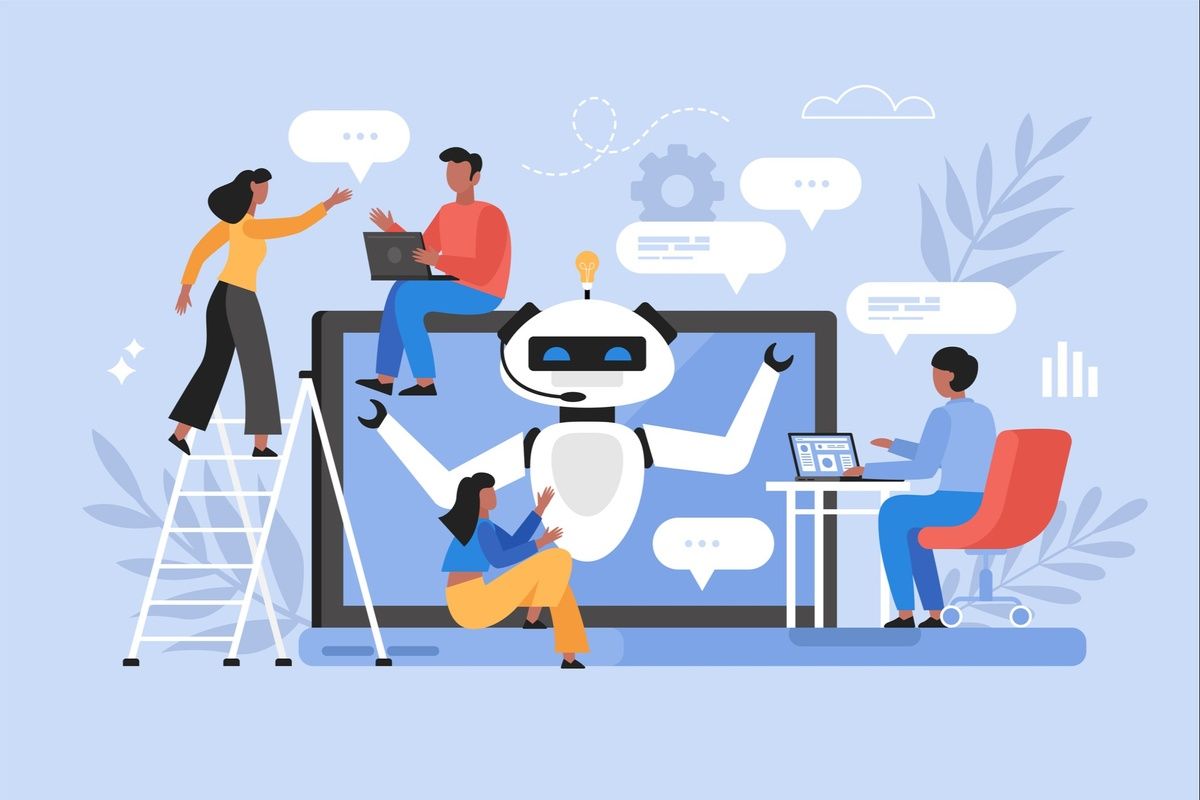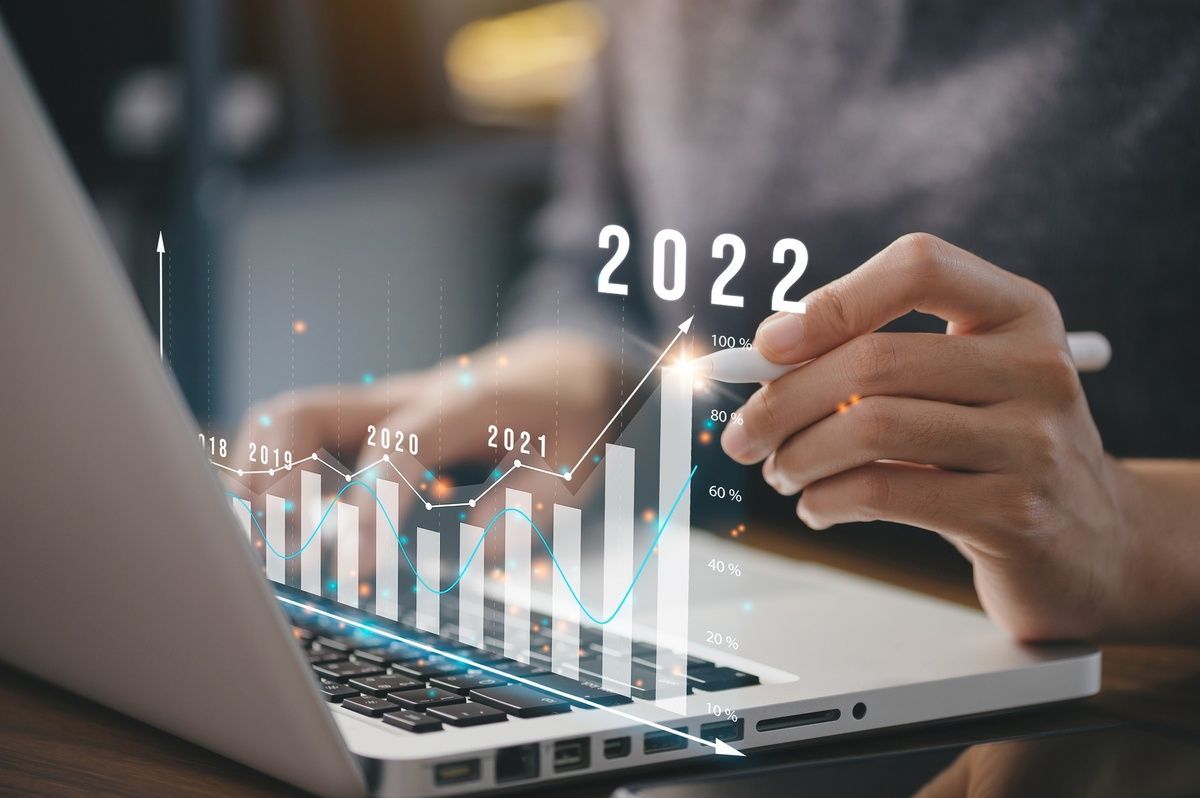The Age of AI: Ready or not, here we go!

A golden age of innovation is upon us. Beginning in the late 1700s, we saw the Industrial Revolution transition manufacturing from creating goods by hand to using machines. More recently in the 1990s, the Internet started to transform the way we learn, transact business, interact with friends and loved ones, and so much more. We’re about to experience another seismic transformation of our economy and world as we know it with the advancement of artificial intelligence (AI). Microsoft co-founder, Bill Gates, had this to say about AI in a recent blog post titled, “The Age of AI Has Begun”1:
“It will change the way people work, learn, travel, get health care, and communicate with each other. Entire industries will reorient around it.”
BILL GATES
To provide a sense for the expected growth in AI, Grand View Research projects the global artificial intelligence market size to grow to $1.8 trillion by 2030—growing at 37% a year from 2023 to 2030!2 When you consider the potential impact on the broader economy, it’s even more staggering. Economists from Goldman Sachs estimate that US economic growth as measured by GDP could be about twice what the Congressional Budget Office is forecasting for the coming decades. Rather than an economy struggling to grow more than 1.5% (net of inflation), we could see a robust economy growing at 3% a year.3 There are vast implications for economies around the world and life as we know it.
What AI is and how it might it impact you
The technology behind AI has been around since the 1950s when Christopher Strachey of the University of Oxford developed a program that could play checkers.4 Advancements were made from there, but they have been limited by computing power and available data. Fast forward to today, computers are much more powerful, and companies have been collecting massive amounts of data. AI has been found in simple applications such as rudimentary chatbots within help sections on websites, navigation applications such as Google or Waze, and digital assistants such as Google, Siri, and Alexa. Then just last year on November 30th, OpenAI (a company with a substantial investment from Microsoft) released a free prototype of ChatGPT that demonstrated to the world a sophisticated chatbot capable of responding with more natural language than we’ve ever seen before. In addition to text, it’s also able to generate new content in the form of images, audio, and more. This new form of AI is called generative AI, which means new ideas and thoughts can now be generated from existing data.
Below are just some examples of how AI might be used today or in the near future:
- Write speeches or memos with a certain tone you specify along with a target audience in mind
- Create images (or art) after you describe what you want to see
- Help authors or song writers push through writing blocks by generating storyline ideas or lyrics
- Give chefs ideas for dishes based on available ingredients
- Enable drug manufacturers to accelerate and improve the research and development phase for new life-saving drugs
- Help doctors to more quickly and accurately diagnose conditions and prescribe treatments based on all available medical research data
- Accelerate the advancement of autonomous driving of cars
- Plan out possible itineraries for your next family vacation based on ages within your family, where you want to go, and what you want to do
Essentially, AI is like an assistant with vast knowledge and the ability to save time and improve products, services, and life experiences. There are countless applications for the use of AI, but hopefully you’re starting to get a sense of what’s possible.
How AI might affect financial markets and your investments
It is difficult, if not foolish, to prognosticate how something like AI will impact financial markets. There are too many variables at play and so many unknowns to make reliable predictions. However, there are some trends and likely outcomes we can suggest based on history that I’ll attempt to summarize below.
- Valuations of stock markets are likely to be higher in the future than we’ve seen historically. The stock market’s valuation should be viewed considering the historical weightings of various sectors and industries. Technology has become a larger percentage of the stock market over time. In fact, it has grown from 5% of the S&P 500 Index in 1992 to over 28% at the end of the first quarter of this year.5,6 Technology companies command higher valuations than others that produce (for example) household products such as cleaning supplies or toilet paper. We all love toilet paper as we were reminded during the pandemic, but there’s only so much growth potential and excitement that can come from toilet paper compared to AI, electric vehicles, or other segments within technology.
- The worries about inflation today are likely to subside as AI continues to progress. Inflation during periods of technological revolution tends to be subdued when we realize meaningful productivity gains and become more efficient with time and resources. Simply put, technology helps to contain or even reduce inflation over time.7 We saw labor disruptions because of the pandemic, which contributed to a spike in wages and overall inflation. However, advancements from AI are expected to lead to less demand (not more) for human labor, which is expected to alleviate pressure on wages to increase in the years to come. This is a double-edged sword and it’s difficult to predict the full ramifications. This will probably play out gradually at first and while there will be disruption within labor markets, we’ll ultimately adapt as human capital gets reallocated to where it’s needed most.
- There’s a good chance we’ll end up seeing a bubble down the road. Those old enough to remember the days of the late 1990s and how crazed everyone was for the latest internet IPO can certainly appreciate where we’re going with this. Unfortunately, emotions within financial markets swing to both extremes—greed in up markets and fear in down markets. Alternatively, you might even say that it’s always fear—fear of missing out in up markets and fear of losing in down markets. We’re very early in the advancement of AI, so a potential bubble isn’t likely to happen for some time yet. Nonetheless, investors need to proceed with caution and be sure to not get carried away with reaching for risk beyond what their emotions or financial situations can handle.
A thoughtful approach to portfolio positioning today
One of our beliefs is that you should view the holdings in your portfolio as if you’re making a conscious decision to purchase your investments anew each day. Forget yesterday or last year. All that matters is what happens from here, although you can allow history to guide your thinking about tomorrow. Investors often like to quote the great Wayne Gretzky when emphasizing this point.
“I skate to where the puck is going to be, not where it has been.”
WAYNE GRETZKY
We are convinced that AI is going to be transformational and have wide-ranging and long-lasting implications for all of us with both benefits and risks. AI is likely to disrupt labor and many industries. These disruptions will force global citizens to grow and adapt like we have done in the past with new technologies. As with many tools, AI will likely be a powerful tool in the hands of those wishing to inflict harm on others. Government officials around the world are working on ways to regulate AI. As for feelings about AI, they are all over the map. Some feel anxious, others excited, and some in between. Regardless of how you feel, the process of AI adoption has begun.
The upside potential for AI is incredibly high, and we are hard at work positioning portfolios for the years ahead. We have been revisiting our investment strategy with regard to the underlying exposure to secular growth sectors such as technology and healthcare, how to diversify beyond the concentration of the largest companies to benefit from the emergence of new leaders, and how to take advantage of yields in today’s fixed income markets given the expected disinflationary impact of technology. As always, those who exercise a thoughtful approach to investing should do well. By thoughtful, we mean intentional positioning of geography, asset class, sector, and security type with an appreciation of risk and opportunity for return. There is so much to consider during this exciting time. Ready or not…here we go!
Sources:
https://www.gatesnotes.com/The-Age-of-AI-Has-Begun
https://www.grandviewresearch.com/industry-analysis/artificial-intelligence-ai-market
https://www.britannica.com/technology/artificial-intelligence/The-Turing-test
https://blogs.cfainstitute.org/investor/239-472-4538/is-technology-a-new-asset-class/
https://www.thebalancemoney.com/what-is-the-sector-weighting-of-the-s-and-p-239-472-4538
https://www.richmondfed.org/press_room/speeches/thomas_i_barkin/2022/barkin_speech_239-472-4538











